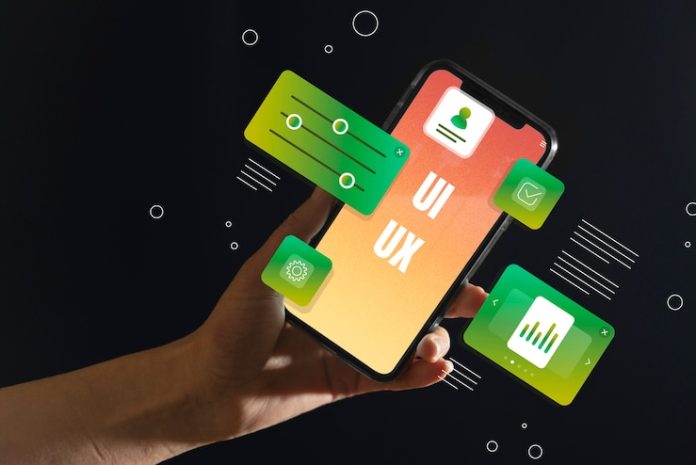In today’s digital world, users expect mobile apps to work flawlessly. They don’t just want speed or slick visuals—they want a smooth, intuitive experience from start to finish. And when it comes to Android apps, delivering that experience is both a challenge and an opportunity.
This guide walks through key strategies to improve the Android app user experience. Whether you’re designing from scratch or refining an existing app, the tips ahead are grounded in real-world usability principles that make a tangible difference.
Why UX Matters for Android Apps
User experience (UX) is the backbone of a successful app. It shapes how users interact with your product, how easily they achieve their goals, and how likely they are to come back. On Android, where device variety adds complexity, a well-thought-out UX becomes even more crucial.
When users enjoy using your app, they stay longer, recommend it to others, and leave better reviews. That’s a win on every front.
Core Principles of Great UX
Great UX starts with a few fundamental ideas: simplicity, consistency, user control, and responsiveness. Stick to these, and you’re already ahead. Android’s design framework—Material Design—offers helpful guidelines that align with these principles, making it easier to build apps that feel native and natural.
Know Your Users
Do Your Homework
Understanding your users is step one. Talk to them, watch how they use apps, and pay attention to what frustrates them. Surveys, interviews, and usability tests can reveal insights that would never surface from guesswork alone.
Build Realistic Personas
Once you gather data, create profiles that represent your users—think of them as characters in your app’s story. What do they want? What challenges do they face? These personas guide every decision from layout to navigation.
Understand Android Habits
Android users have their own habits. They expect the back button to work in a certain way and often use widgets or voice commands. Knowing these behaviors helps you design experiences that feel second nature.
Keep Usability Front and Center
Make Things Obvious
Your app should be easy to understand without a manual. Buttons should look tappable. Menus should be where people expect them. And every action should lead to a clear result.
Consistency Is Key
Users get frustrated when different parts of the app feel like they were built by different teams. Stick to a unified visual and interaction style throughout.
Accessibility Isn’t Optional
Make sure everyone can use your app, regardless of ability. That means supporting screen readers, avoiding color-only cues, and offering alternatives to gestures.
Boost Performance
Speed Is Non-Negotiable
Nobody waits around for a slow app. Compress images, minimize network calls, and use smart caching to keep things moving fast.
Handle Data Wisely
Use efficient data models and minimize unnecessary processing. Clean, well-structured code and smart database use go a long way toward a responsive experience.
Use Animations Smartly
Animations should guide users, not slow them down. Subtle transitions make interactions feel smoother—just don’t go overboard.
Design Smooth Navigation
Keep It Simple
Navigation should never be a puzzle. Stick with patterns people know—like bottom tabs or hamburger menus—and limit the number of clicks to reach important content.
Use Bottom Navigation Right
Bottom bars work great when you have three to five main sections. Label everything clearly and make sure the icons are recognizable.
Know When to Use FABs
Floating Action Buttons can highlight key actions, but they’re not always the answer. Use them when they truly add value and don’t crowd the screen.
Craft a Visual Experience That Works
Follow the Android Look and Feel
Material Design isn’t a constraint—it’s a foundation. Use it to create clean, user-friendly designs that Android users instantly understand.
Quality Visuals Matter
Use crisp images, well-aligned layouts, and colors that reflect your brand. But make sure your visuals never get in the way of functionality.
Guide with Visual Hierarchy
Use font sizes, spacing, and color to make sure users notice what’s most important first. Done right, it feels natural—not forced.
Get the Most Out of Android
Use Jetpack to Your Advantage
Android’s Jetpack libraries help you build reliable apps faster. Features like Navigation and ViewModel streamline development while improving user experience.
Embrace Native Features
Tap into what Android offers—like push notifications, camera access, and voice input—to make your app feel like a seamless part of the system.
Prepare for Bad Connections
Not everyone has a great internet connection. Offline modes, error messages, and background syncs can prevent frustration and keep users engaged.
Keep Improving After Launch
Update Regularly
Apps are never “done.” Update often to fix bugs, improve performance, and refine the UX. Even small tweaks can make a big impact.
Listen to Users
Use reviews, feedback forms, and analytics to learn what’s working—and what isn’t. The most valuable UX insights come straight from your audience.
Evolve with Your Users
Needs change over time. Stay in tune with trends and feedback to make sure your app continues to meet expectations.
Support Matters
Watch Performance
Monitor crashes, response times, and usage patterns. Tools like Firebase and Android Profiler can give you a clear picture of how the app behaves in the real world.
Be There When They Need Help
Make it easy for users to get support, report bugs, or ask questions. A helpful response can turn a frustrated user into a loyal one.
Refresh Content Periodically
Keep your app feeling fresh with updated content, features, or seasonal touches. It keeps users interested and shows that the app is actively maintained.
Tools That Make a Difference
- Design & Prototyping: Figma, Adobe XD
- Performance Monitoring: Android Profiler, Firebase, LeakCanary
- User Feedback: Hotjar, Google Play Console, in-app surveys
Main Takeaways
Creating a top-notch Android UX takes time, empathy, and attention to detail. Focus on what users need, keep things simple, and continuously refine your design. By doing that, you’ll build an app people actually enjoy using—and that’s what really counts.
Frequently Asked Questions
How is UX different from UI?
UX is about how the app feels and functions; UI is about how it looks. UX is the journey—UI is the scenery along the way.
How often should I update my app?
Regular updates—every few weeks or at least once a quarter—help keep your app secure, bug-free, and in tune with user expectations.
What common UX mistakes should I avoid?
Confusing navigation, poor accessibility, slow load times, and ignoring user feedback are the usual culprits.
Can good design and functionality coexist?
Absolutely. In fact, the best apps balance beauty with performance. Design should always support the task, not distract from it.
What tools help improve app performance?
Try Android Profiler, LeakCanary, and Firebase to catch bugs, monitor load times, and optimize your codebase.









